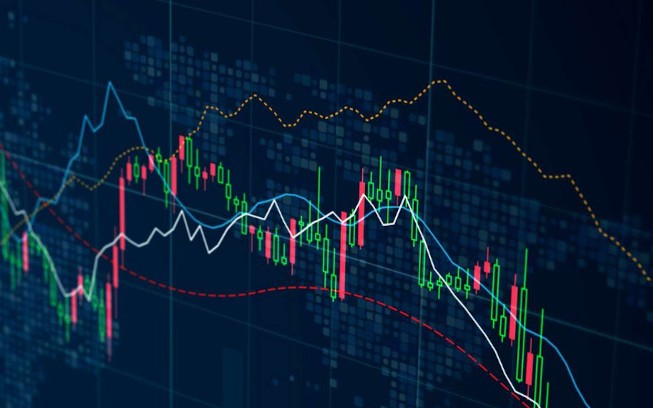
Forex algorithmic trading is transforming the way traders engage with the foreign exchange market. This innovative approach leverages technology and automated processes to execute trades with precision and speed. In this article, we will delve into the various aspects of Forex algorithmic trading, including its advantages, strategies, tools, and potential pitfalls. Whether you are a seasoned trader or a newcomer to the Forex world, understanding algorithmic trading can significantly enhance your trading performance. For more insights into trading strategies and tools, check out forex algorithmic trading Trading Asia.
What is Forex Algorithmic Trading?
Forex algorithmic trading, often referred to as algo trading or automated trading, involves the use of computer algorithms to execute trades on behalf of a trader. These algorithms are designed to make decisions based on predefined criteria, such as price movements, market trends, and statistical patterns. By automating the trading process, traders can take advantage of market opportunities more efficiently than if they were to manually place trades.
Advantages of Forex Algorithmic Trading
- Speed: Algorithms can analyze data and execute trades in fractions of a second, which is crucial in a fast-paced market like Forex.
- Accuracy: Automated trading minimizes the risk of human error, ensuring that trades are executed exactly as intended.
- Backtesting: Traders can test their algorithms on historical data to evaluate their performance before deploying them in live markets.
- Consistency: Algorithms can maintain a consistent approach to trading without being influenced by emotions or psychological factors.
- Diversification: Algorithmic trading allows traders to manage multiple accounts or strategies simultaneously, increasing diversification.
Common Strategies in Algorithmic Trading
There are various strategies employed in Forex algorithmic trading, each with its unique advantages. Here are some of the most common ones:
1. Trend Following
This strategy involves identifying and capitalizing on existing market trends. Algorithms are programmed to recognize upward or downward movements in currency pairs and execute trades accordingly. For example, if the price of a currency pair is consistently rising, the algorithm may initiate buy orders to capitalize on the trend.
2. Arbitrage
Arbitrage strategies exploit price discrepancies between different markets or currency pairs. Advanced algorithms can simultaneously buy and sell currency pairs across different platforms to profit from minor price differences. This strategy requires speed and efficiency, making it well-suited for algo trading.
3. Mean Reversion
The mean reversion strategy is based on the assumption that prices will return to their mean or average over time. Algorithms can identify when a currency pair is overbought or oversold and execute trades that capitalize on this deviation. For instance, if a currency pair’s price drops significantly, the algorithm may initiate a buy order, anticipating a return to the average price.
4. News-Based Trading
News events can have a significant impact on Forex markets. Algorithms can be programmed to analyze news feeds, economic indicators, and financial reports, executing trades based on anticipated market reactions. This strategy requires real-time data processing and quick decision-making capabilities.
Key Tools and Technologies

To engage in Forex algorithmic trading effectively, traders need to leverage specific tools and technologies. Here are some essential components:
1. Trading Platforms
Choosing the right trading platform is crucial for algorithmic trading. Popular platforms like MetaTrader 4 (MT4) or MetaTrader 5 (MT5) offer built-in tools for algorithm development, backtesting, and live execution.
2. Programming Languages
Many algorithmic trading strategies require custom coding. The most common programming languages used in this field are Python, R, and C++. Each language has its own advantages, and the choice often depends on individual preferences and specific strategy requirements.
3. Data Feeds
Accurate and real-time data feeds are essential for algorithmic trading. Traders need access to reliable sources of market data, including price quotes, trading volumes, and economic indicators.
4. Backtesting Software
Backtesting is a critical step in the algorithm development process. Traders use specialized software to simulate their strategies against historical data. This helps identify potential weaknesses and refine the algorithms before they are deployed in live trading.
Challenges and Pitfalls
While Forex algorithmic trading offers numerous advantages, it is not without its challenges. Traders must be aware of potential pitfalls, including:
- Market Volatility: Sudden market movements can lead to significant losses if algorithms are not designed to handle extreme conditions.
- Overfitting: Traders may inadvertently create algorithms that perform well on historical data but fail in live markets due to overfitting.
- Technology Risks: Technical issues such as connectivity problems, software bugs, or server outages can disrupt trading and lead to losses.
- Lack of Adaptability: Algorithms may struggle to adapt to changing market conditions, requiring regular monitoring and updates.
Best Practices for Successful Forex Algorithmic Trading
To maximize the chances of success in Forex algorithmic trading, consider the following best practices:
- Start Small: Begin with a small investment to test your algorithms in live conditions before scaling up.
- Monitor Performance: Continuously monitor the performance of your algorithms and make adjustments as needed based on changing market conditions.
- Use Risk Management: Implement robust risk management strategies to protect your capital from unexpected market events.
- Stay Informed: Keep up to date with market news, economic indicators, and technological developments that may impact your trading strategies.
- Collaborate and Share Knowledge: Engage with other traders and share experiences to enhance your understanding of algorithmic trading.
Conclusion
Forex algorithmic trading represents a powerful tool for traders looking to enhance their performance in the foreign exchange market. By understanding the advantages, strategies, tools, and challenges associated with algorithmic trading, you can position yourself for success. As technology continues to evolve, the landscape of Forex trading will undoubtedly change, presenting new opportunities and challenges for traders worldwide. Embrace the possibilities that algorithmic trading offers, and consider leveraging resources such as Trading Asia for further insights and support in your trading journey.
